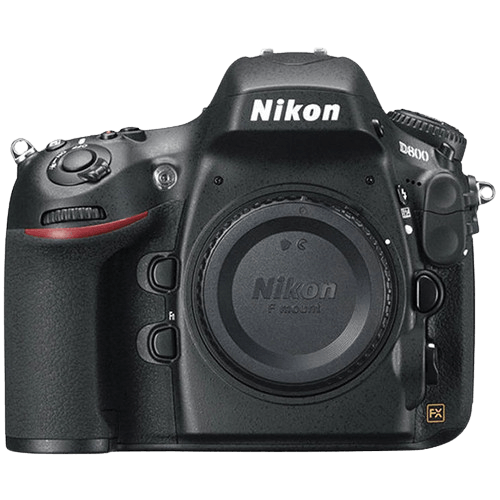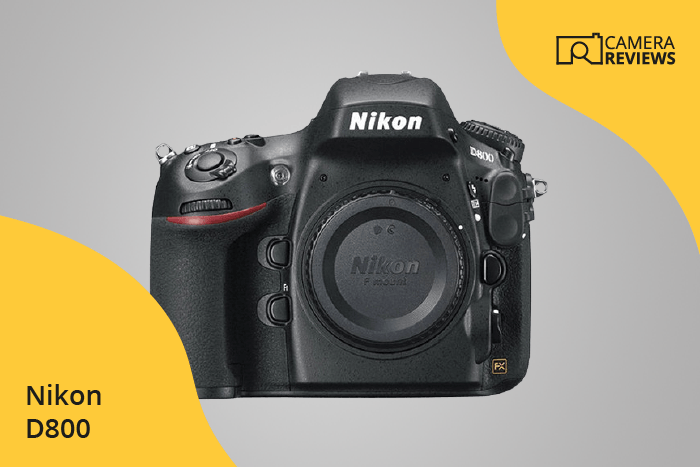Nikon D800 Specs and Scores

With a score of 69 out of 100, the Nikon D800 is a DSLR camera that was announced on February 7, 2012, and released the same year. Priced at $2,999, this camera measures 146 x 123 x 82mm and weighs 1000g or 2.20lbs.
Considering the specifications, the Nikon D800 offers decent features for a camera released in 2012. However, it may not be the top choice for today’s market, as newer models have since been introduced with advanced technology and improved performance. Despite this, the D800 still holds its own as a reliable camera for various photography needs.
Nikon D800 Overview and Optics
The Nikon D800 achieves a solid optics score of 74 out of 100. This camera possesses a 36.3-megapixel CMOS sensor and a full-frame format, which contributes to its high-resolution image capturing capabilities. The Expeed 3 processor enables a shooting speed of 4 frames per second, a respectable rate for a camera of its class.
In today’s market, the Nikon D800 competes well with its Nikon F FX lens mount, which allows photographers to use a wide range of quality lenses. However, the camera lacks image stabilization, a feature that many modern cameras offer. The aspect ratio of 3:2 is standard and provides photographers with the familiar dimensions for their images.
The DXOMARK score of 95 for the sensor is an impressive rating, showcasing the camera’s ability to perform well in various shooting conditions. While the Nikon D800 may not be the latest model, its optics capabilities still hold up to the demands of many photographers. This camera remains a reliable choice for those seeking high-resolution images and a versatile lens selection.
Nikon D800 Video Performance
The Nikon D800 has a video score of 57 out of 100. The camera offers Full HD video resolution with maximum dimensions of 1920 x 1080 pixels. The maximum video frame rate is 30 frames per second, providing smooth motion capture. Additionally, the D800 has a built-in time-lapse functionality, allowing users to create stunning time-lapse videos without the need for external accessories.
Comparing the D800’s video capabilities to current market offerings, it falls short in some areas. Many modern cameras offer 4K video resolution and higher frame rates, which provide greater detail and smoother motion. However, the D800’s Full HD video quality and time-lapse feature still make it a viable option for those who prioritize photography over videography.
The Nikon D800’s video capabilities are satisfactory for casual users but may not meet the demands of professional videographers. Despite its limitations, the camera remains a reliable choice for photographers looking for a versatile tool with time-lapse functionality.
Nikon D800 Features and Benefits
The Nikon D800 scores 57/100 in the features department. With a screen size of 3.2 inches and a resolution of 921000 dots, it offers a decent display. However, it lacks a touchscreen, flip screen, GPS, and Bluetooth capabilities, limiting its convenience and functionality for users.
In today’s market, the Nikon D800’s features may not be as competitive as newer models. Many cameras now boast touchscreens and flip screens, allowing for easier menu navigation and versatile shooting angles. GPS and Bluetooth have become common additions, providing location data and seamless connectivity with smartphones and other devices.
Despite these limitations, the Nikon D800 does include WiFi, enabling wireless transfer of images and remote shooting. While this camera may not have the most up-to-date features, it remains a solid choice for those seeking a reliable DSLR with good image quality.
Nikon D800 Storage and Battery
The Nikon D800 receives a storage and battery score of 71 out of 100. This camera offers two memory card slots, accommodating SD / SDHC / SDXC (UHS-I compatible) and Compact Flash cards. The dual card slots allow for more storage and flexibility when capturing images or videos.
The D800 is powered by an EN-EL15 battery, providing up to 900 shots per charge. This battery life is decent, though not exceptional in today’s market. The camera does not support USB charging, which could be an inconvenience for some users.
Taking into account the storage options and battery life, the Nikon D800 performs well but has room for improvement in these areas.
Nikon D800 Alternatives
Do you want to know how the Nikon D800 compares to its competitors? Have a look at the most popular comparisons for this camera below:
- Nikon D750 vs D800
- Nikon D800 vs D850
- Nikon D800 vs D810
- Canon EOS 70D vs Nikon D800
- Nikon D7200 vs D800
- Nikon D800 vs D800E
Nikon D800 FAQ
Does the Nikon D800 Have Built-in Image Stabilization?
No, the Nikon D800 does not have built-in image stabilization. However, you can use lenses with VR (Vibration Reduction) technology to help stabilize your shots.
Does the Nikon D800 Support 4K Video Recording?
No, the Nikon D800 does not support 4K video recording. The maximum video resolution it offers is Full HD 1080p at 30 frames per second.
What Size Sensor Does The Nikon D800 Have?
The Nikon D800 features a full-frame 36.3-megapixel CMOS sensor, which provides excellent image quality and low-light performance.
Does the Nikon D800 Have a Dual Memory Card Slot?
Yes, the Nikon D800 has a dual memory card slot, supporting one CompactFlash (CF) card and one Secure Digital (SD) card, allowing for versatile storage options and backup.
Does the Nikon D800 Have a Touch Screen?
No, the Nikon D800 does not have a touch screen. It features a 3.2-inch LCD monitor with 921,000 dots resolution for image review and menu navigation.
Does the Nikon D800 Have Wi-Fi and Bluetooth?
The Nikon D800 has built-in Wi-Fi capability, allowing wireless image transfer and remote control. However, it does not have Bluetooth connectivity.
Does the Nikon D800 Have GPS?
No, the Nikon D800 does not have built-in GPS. You can use an external GPS device via the accessory terminal for geotagging your images.
Is the Nikon D800 Weather Sealed?
Yes, the Nikon D800 is weather sealed with a magnesium alloy body, providing protection against dust, moisture, and some degree of shock resistance.
Does the Nikon D800 Have a Built-in Flash?
Yes, the Nikon D800 has a built-in flash with a guide number of 12 meters at ISO 100, useful for fill flash or as a commander for off-camera flash units.

